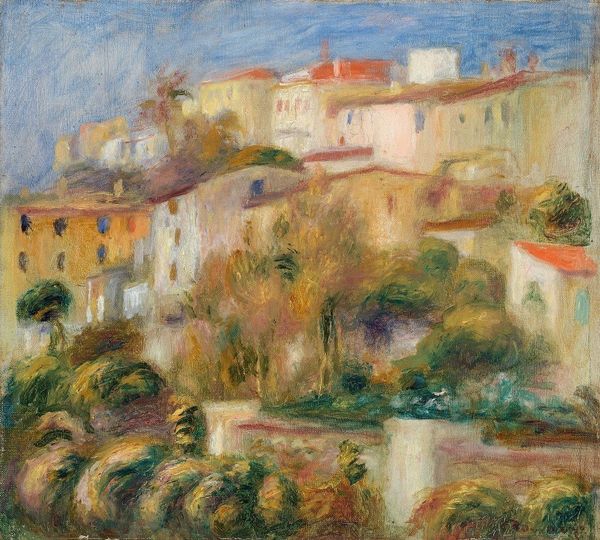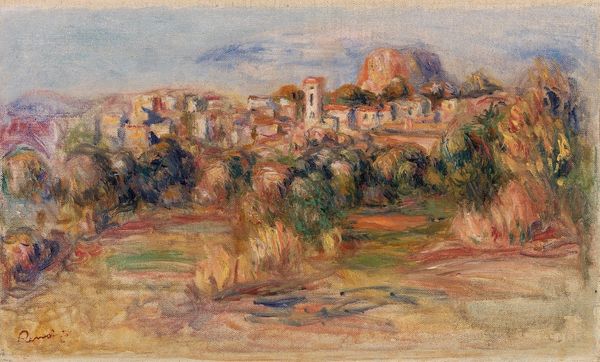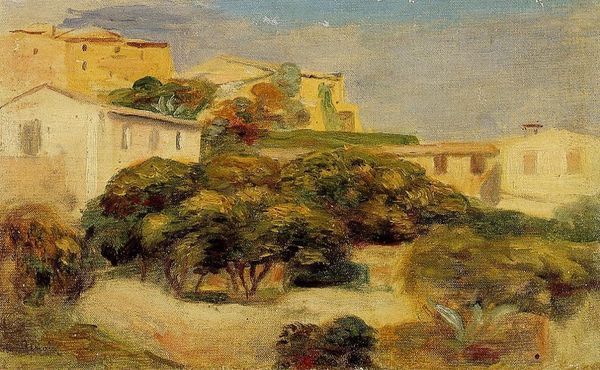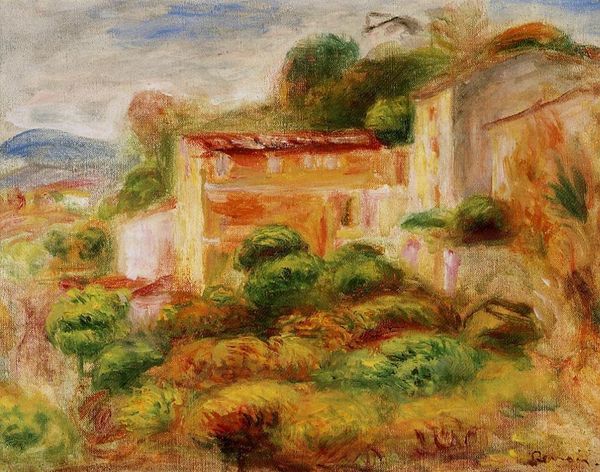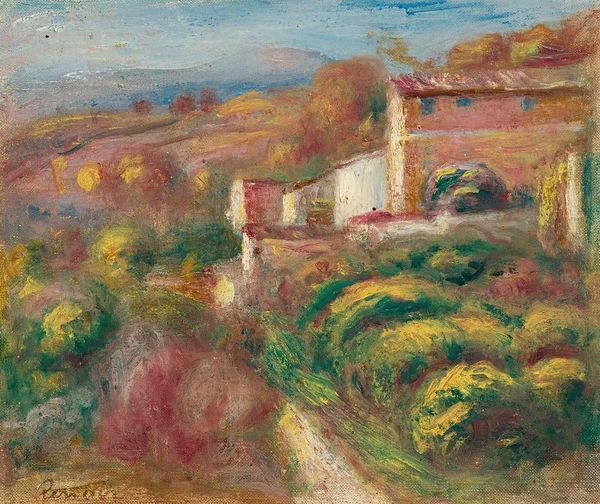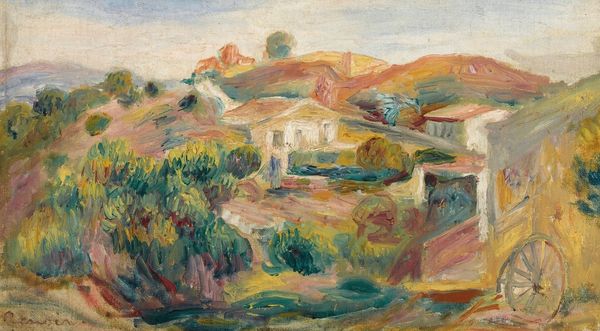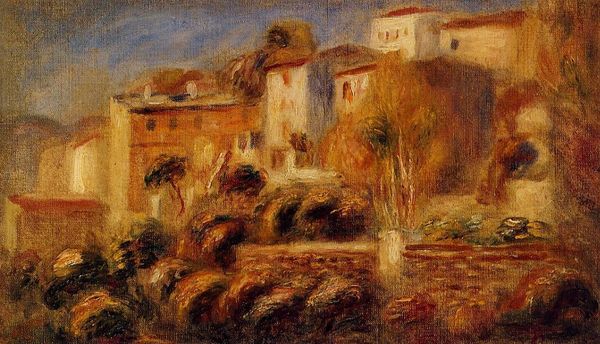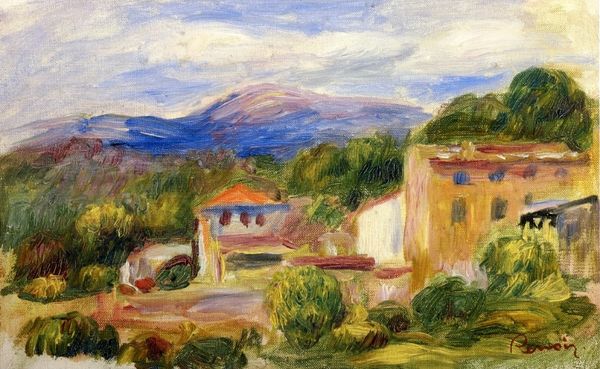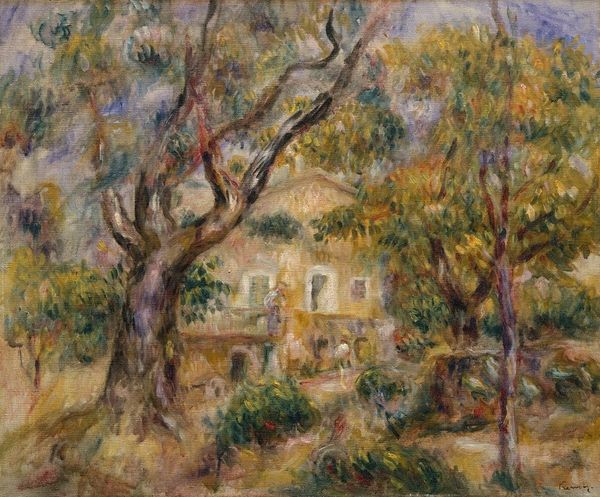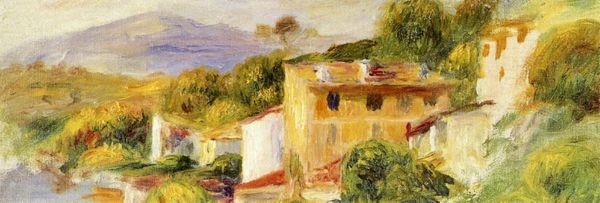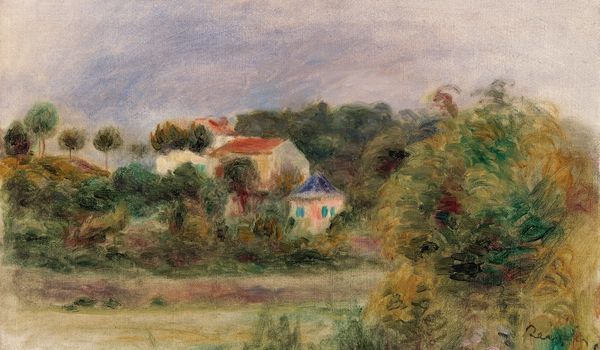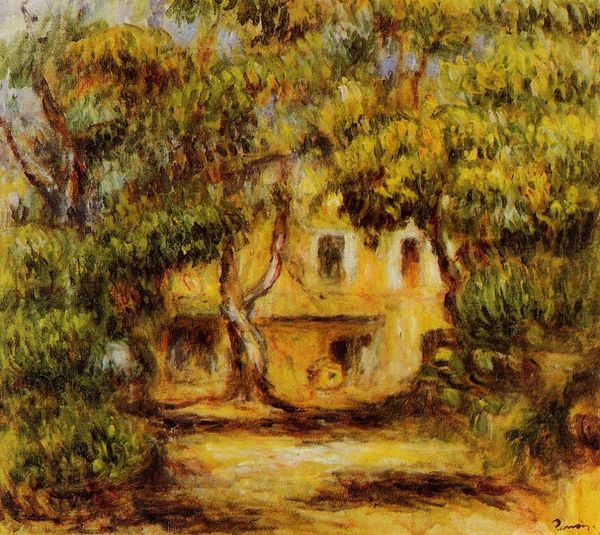
Copyright: Public Domain: Artvee
Editor: We're looking at Renoir's "View from the Garden of the Post Office, Cagnes" from around 1908, oil on canvas. It's such a vibrant scene, full of these soft, blurred shapes. How do you interpret this work, focusing on its composition? Curator: Structurally, the composition is quite intriguing. Notice how the ascending arrangement of the buildings leads the eye upwards, creating a sense of depth within the two-dimensional space. It is cleverly balanced with the vegetation in the foreground. Does this formal arrangement suggest a narrative? Editor: It almost feels like the town is a natural extension of the landscape. Is that effect intentional? Curator: The seamless blending of the man-made and natural worlds can be interpreted as a deliberate artistic choice. Look at how Renoir uses color: the warm tones of the buildings mirror the earth tones, unifying the visual elements. Is there any single aspect that seems to unify the picture for you? Editor: Definitely the light. It hits everything the same way and pulls all the elements together into this shimmering haze. I never considered how the lack of hard lines contributed to the emotional quality. Curator: Precisely. This diffusion dismantles traditional hierarchies of representation and places the artwork in its own world. So, examining just the brushstrokes, color and placement of objects generates the picture's narrative. Editor: That makes me think differently about Impressionism; the feeling isn't just about what's depicted, but *how* it's depicted. Curator: Precisely! I found it insightful how considering pure structure provides another method for perceiving art.
Comments
No comments
Be the first to comment and join the conversation on the ultimate creative platform.
